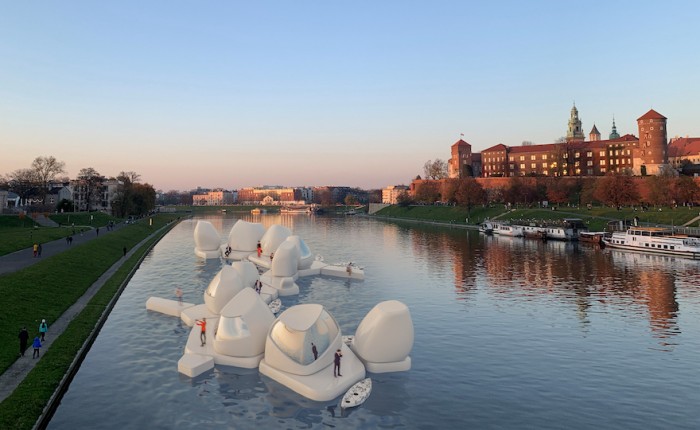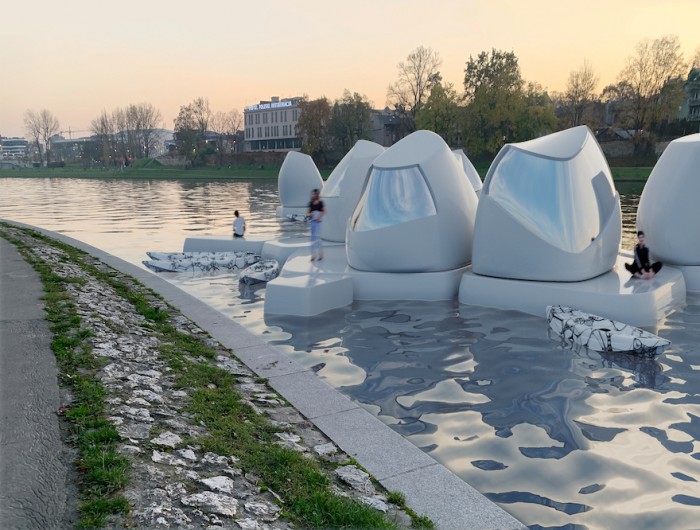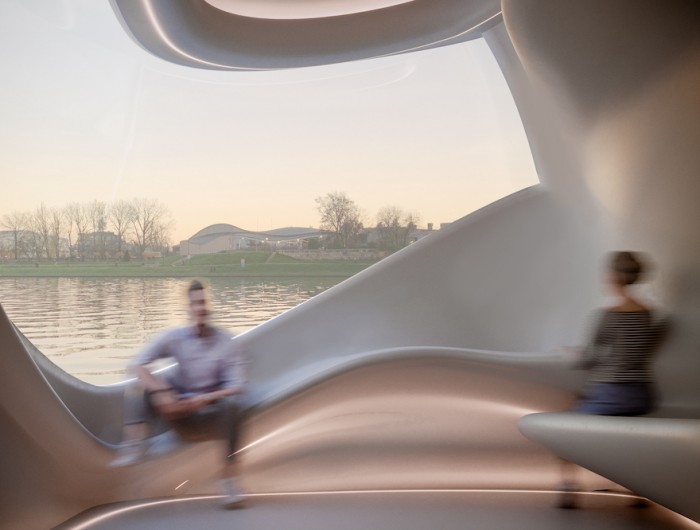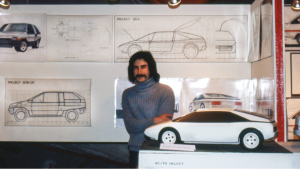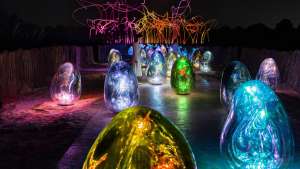Inspired by the challenges and realities of co-working in the post-pandemic era, designer Agnieszka Białek has imagined a community-oriented but autonomous solution. Enclaves, situated on the Vistula River in Poland, is an innovative cluster of co-working spaces designed to float in the water.
Białek is a graduate of the Academy of Fine Arts in Krakow, and was inspired by the local landscape next to which she has lived for years. Her idea was developed during the onset of the pandemic as she observed a new way of life unfolding.
“It is still difficult to define the changes that COVID will make in architecture in the long run. We know for sure that we are facing a new reality. Remote work has become the norm for most companies and will continue for a long time to come. Consequently, employees will be able to choose the time and form of work. To a large extent, we will notice fatigue with the home space. We will gladly move the work zone from home to another place,” Białek says.
Her floating co-working pods are a response to the need for new ways of working. They offer privacy, personal space, and a peaceful work environment, but with a sense of community and engagement with the city.
“The concept makes working remotely possible, and becomes a comfortable place for online meetings, or relaxing in the new reality of reduced touch,” she states.
Designed so as not to interfere with their surrounding environment, the pods also allow many different arrangements and locations on the river. The starting point for creating the shapes of the Enclaves was the natural environment - water bubbles, the geometric arrangements of river foam shapes, even water lilies and their root system. The oval forms evoke positive associations of security and comfort.
The individual pod elements, while self-contained, are part of a larger system. They are anchored to the river bed and connected, allowing them to create modular arrangements on the surface. The structures exist as 3D virtual models that could be 3D-printed in the future using waterproof, recyclable materials.
Visit www.monolightstudio.com
Credits:
Monolight Studio

